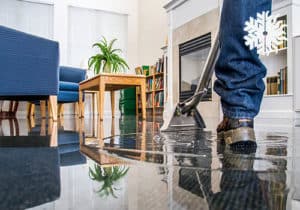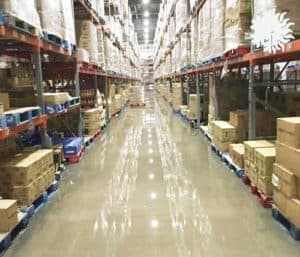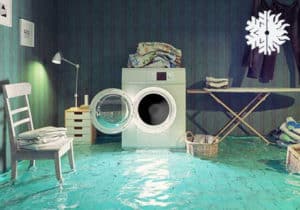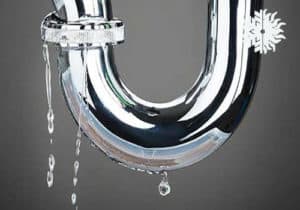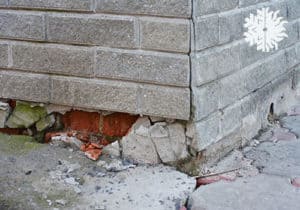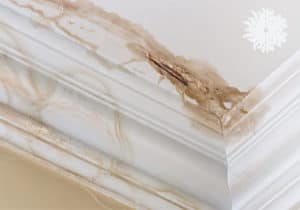Laminate flooring is rapidly becoming the first choice of most people in Dallas. The explosive rise in its popularity can be attributed to the durability, functionality, and unique, stylish look that comes with it.
What’s even better is, that it can last years and years even with the least effort from the homeowner’s side.
The only thing that can significantly affect the longevity of laminate flooring is water, which can creep deep into the layers of the flooring and damage the woody component.
Although a few spills now and then don’t hurt much, if you strictly follow the installation manual. But if the source of water damage is improper installation of the flooring, that’s worrisome.
Due to such unprofessional behavior, causes of water damage in homes can cost you both time and money.
For instance, any plumbing leak can supersaturate your laminate floor and lead to the disintegration of the flooring material.
You might ask yourself what to do when something just like this happens. Well, not to worry, because we at The Duct Kings of Dallas have got it all worked out.
Our experts get a detailed look and follow the most reasonable measures to make your laminate floor as good as new.
What Are The Signs of Laminate Floor Damage
Before our fire and water damage restoration Dallas tx technicians start to fix your laminate flooring, they will look for some signs to know the degree and extent of the damage.
Our employees have set basic criteria and looked for these symptoms to get a gist of how much harm has occurred to your laminate floor:
- Bubbling: The first sign that our team looks for is any bubbles on your floor, especially when they apply pressure.
Some of the underlying moisture content forces its way to the surface and gives away a hint that your flooring needs some fixing. - Splitting: The next obvious hint of water damage to your laminate floor is noticeable gaps between the planks.
High humidity levels and hot weather, coupled with increased water saturation levels in your flooring, separate the floorboards and lead to a significant amount of splitting. - Buckling: If left untreated, the water in your laminate flooring can cause the planks to bend at awkward angles.
This buckling is spotted by our experts instantly, who then take all the required measures to fix the planks and mend your laminate floor. - Cracking: Another symptom that professionals often look for is any visible cracks in your floor.
The water damage due to improper installation can cause the subfloor to become uneven. Things get so worse that proper cracks start to appear on your floor with time. - Excessive cupping: Are the edges of your laminate flooring raised higher than the central plank?
If yes, then a higher moisture level below the finished flooring material than above it is the real culprit. Call upon the services of a professional to get the problem fixed. - Visible mold: If there’s a high level of moisture and water content beneath your laminate flooring, mold will latch onto it almost instantly because it is impossible to keep the two apart.
Our team of experts takes a good look at the mold and then comes up with an appropriate plan to eliminate it. - Discoloration: The worst thing that unattended moisture content can do to your laminate floor is spoil its finish and discolor it.
Imagine spending a small fortune to install elegant laminate floors, only to have half of your flooring ruined because of water damage.
Step-By-Step Process to Fix Laminate Floors From Water Damage
Some experts raise their hands to fix laminate floors affected by water damage, while others apply different techniques and solutions.
At The Duct Kings of Dallas, we have an extensive method of treating your laminate flooring and initiating a rescue mission to bring it back to its original condition.
Our experts take the following measures to ensure the best treatment that your damaged laminate floors can get:
- Containing the source of water damage: The first and foremost important step in our fixing regime is to contain water damage, whether a leaky pipe, a consistent liquid spillage, or a faulty installation.
Otherwise, you might encounter the same problems again after the entire treatment. - Identify the damaged plans: Although this step is quite simple and convenient, our experts give it the required amount of undivided attention to assessing the area of damage correctly.
If the host is good with it, our team marks the affected areas with the help of a bold marker or highlighter. - Have the right tools at hand: No technical expertise and professionalism can get the job done without the right tools.
We send our team with safety glasses, pliers, utility knives, measuring tape, and a cleaning solvent to ensure the plan is executed without any hiccups. - Remove the laminate: Next up is to pull the laminate planks, and laminate floorboards and remove the entire plank.
It’s not easy to see someone rip off your entire flooring, even if a small area of it is damaged and affected, but someone has to do it.
The reason behind pulling the entire plank is that the floorboards combined function as a single unit. - Replace the planks: Once our employees have successfully removed the laminate, replacing the planks with new ones is the most difficult step in the entire water damage mitigation process.
Homeowners often overlook the crucial aspect of matching the planks with the room’s aesthetics, existing floor color and design, and usability.
Our experts can guide you through these complexities and take all the required measurements to don’t have to spend surplus money on extra, unused floorboards. - Reinstall the flooring: The last and final step our experts take is to apply an adequate amount of adhesive and reinstall the flooring.
It is advised to place a heavy object, if readily available, on the laminate to make sure the floorboards stick well.
Avoid spilling any water until the floor has dried completely. Additionally, reinstalling laminate flooring in high-moisture areas is risky and needs extra preventative measures for which you need a professional set of hands-on board.
Conclusion
Fixing laminate floors and recovering them from water damage is too hot to handle for everyone.
Whenever you fear your entire floor is about to fall prey to water damage, hit us up, and we’ll send a team right away to handle the task professionally and successfully!

